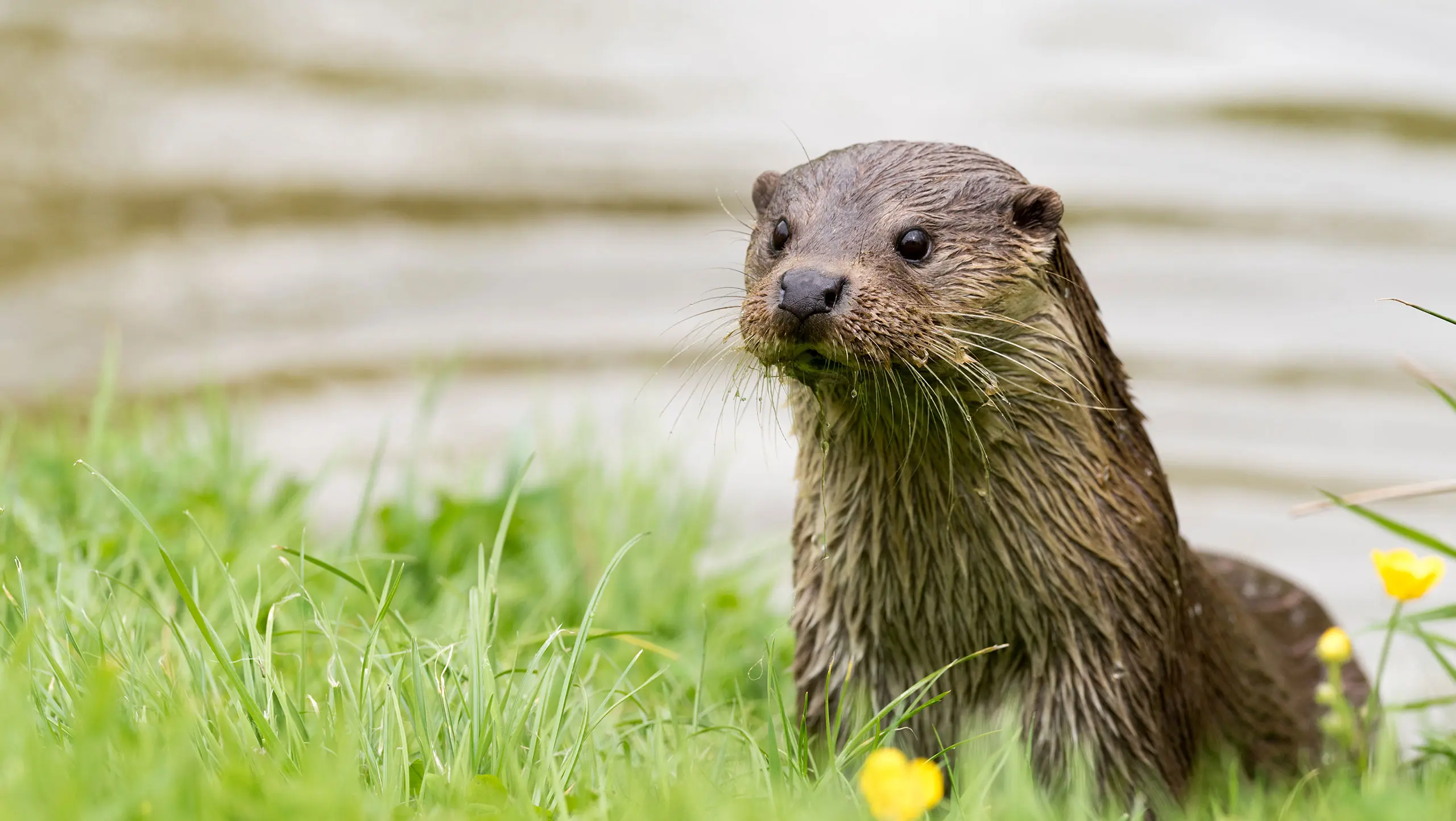In a nutshell…
Otters are predators. They feed mostly on fish and crustaceans, often eating around 15% of their body weight every day!
Their huge appetites are vital for the ecosystem because they control the sea urchin population, allowing carbon-absorbing kelp forests to grow.
But due to habitat destruction and angry fishery owners, they’re now endangered and are therefore legally protected in the UK. You could get into trouble if your project affects them.
So if it looks like they might be on or around your site, you should get an otter survey done early in the planning process. That way, you know what you’re dealing with, and can figure out how to work around them.
We can help you with this. Just click the button above.
Want to know more about how it all works? Read on.
Why do you need an otter survey?
Otter surveys establish whether otters are using your site.
You’ll need an otter survey if your site is within 200m of a suitable water body and if your project has the potential to adversely impact the watercourse, fragment otter habitat or disturb/destroy an otter’s resting place.
Other impacts may also trigger a survey. Large developments may need a more extensive survey, encompassing an area proportionate to the predicted impacts.
Otter surveys can be conducted at any time of year. However, we prefer to conduct them over winter as the lack of vegetation can make evidence easier to find.
If you think you require an otter survey, we suggest you get in touch as soon as possible, no matter the time of year. We’ll establish the potential constraints to your development, and find a suitable solution as early in the process as possible.
What does an otter survey involve?
Otter surveys have two stages: a site visit to search for evidence of otters on site (as well as upstream and downstream), followed by the monitoring of any potential resting places we find.
Here’s how it works:
Site visit
We’ll search all suitable on-site habitats and along the watercourse that flows through or near your site, including 200-250m both upstream and downstream. For larger developments and linear infrastructure projects, more extensive searches of the terrestrial habitat (up to 500m either side of the site) may also be required.
We’ll photograph any evidence of otters, such as spraint, footprints and feeding remains, and record the GPS location of any potential resting places.
Monitoring
If we find evidence of otters, monitoring may be required to establish how they’re using the site/watercourse, and whether cubs are present, which would indicate breeding activity. This can involve camera trapping the watercourse and endoscoping any potential resting places.
Report
We’ll write up the survey results in a Phase 2 report suitable for submission alongside your planning application. If otters are present within the Zone of Influence (ZoI) of your development, our report will detail the mitigation and compensation measures required to avoid impacts and ensure your project complies with all otter-related legislation and policies.
What if we find otters?
If we identify signs of otters within your ZoI, you must demonstrate that otters will be protected during the development process and that disturbance will be minimal. Mitigation measures may involve: taking suitable steps to avoid impacting otter habitat; creating new holts; improving habitat connectivity; compensatory planting and habitat creation; and installation of otter-proof fencing.
Species status and protection
Otters are protected by both the Wildlife & Countryside Act 1981 (as amended) and The Conservation of Habitats and Species Regulations 2010. This makes it illegal to: deliberately or recklessly kill, injure or capture an otter; deliberately or recklessly disturb or harass an otter; and damage, destroy or obstruct access to an otter’s breeding site or resting place.
The otter is also a UK Biodiversity Action Plan Species, and has been adopted as a Species of Principal Importance in England under Section 41 of the NERC Act 2006.
